Salento & Jardín: Colombia's colourful countryside
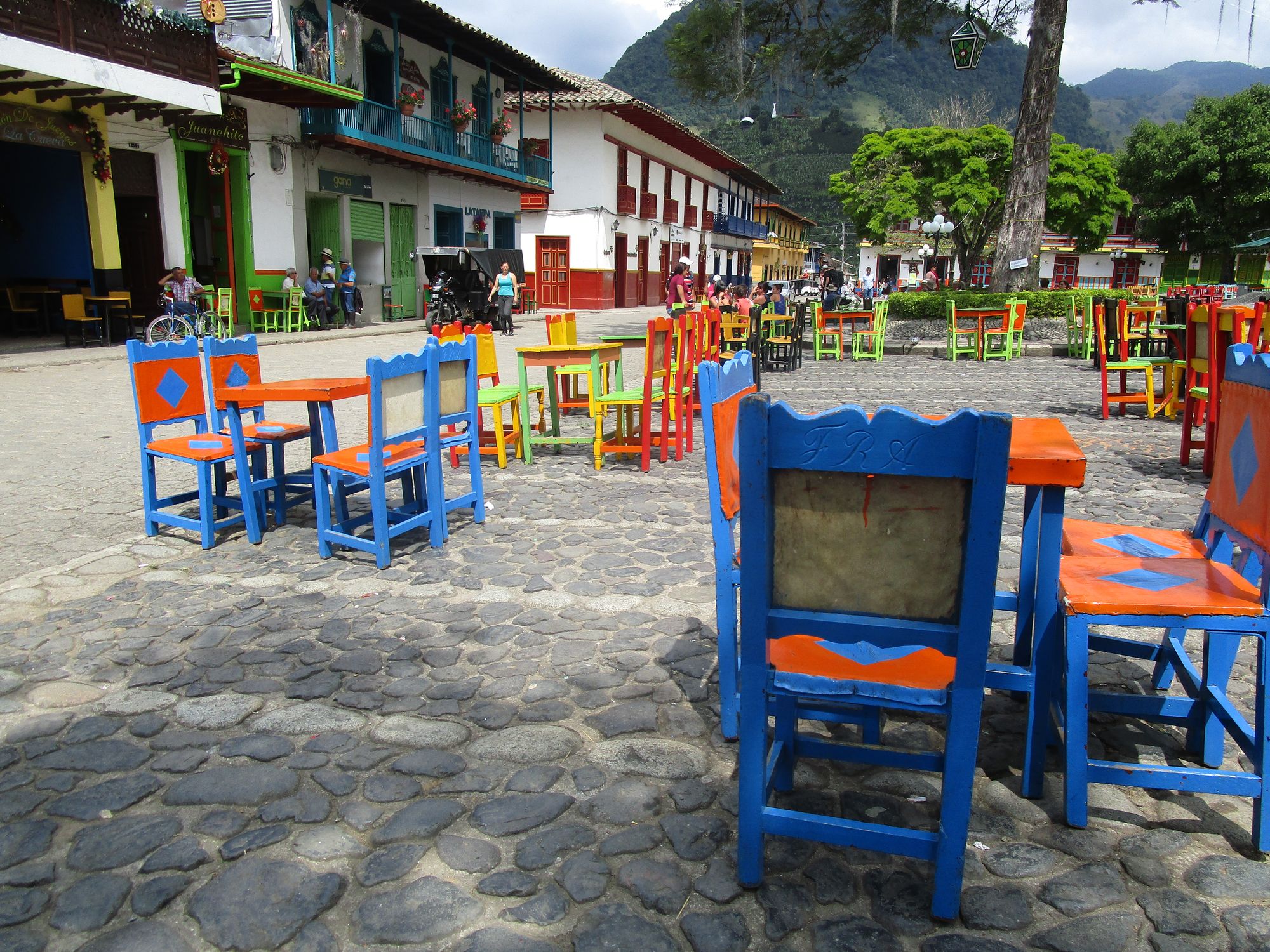
As the sun faded and darkness fell, the streets of Salento began to flicker into life.
Fairy lights were twinkling overhead, neon palm trees began to glow, and the locals started placing little lanterns along the pavement outside their homes. We had arrived in Salento on the día de las velitas, the 'Day of the Little Candles', which Colombians celebrate every year on the eve of the Immaculate Conception. The weekend is a public holiday, marking the unofficial start of the Christmas period in Colombia, and for the first time on this trip we began to feel a little festive.

Colombia has some fantastic big cities, but it's the small towns that really stand out. Salento was typically picturesque, full of whitewashed colonial buildings lit up with vivid colours. Tourists on horseback clip-clopped along the streets, salsa music drifted across the main square, and flocks of green parakeets screeched overhead.

Salento is the most popular base for exploring the Zona Cafetera, an area of spectacular natural beauty that produces Colombia's most famous (legal) export. Coffee thrives in this part of Colombia, thanks to a perfect combination of altitude, sun, humidity, rain and fertile volcanic soil. The owner of our B&B recommended a couple of coffee farms (known as fincas in Spanish) just outside Salento, so we set off down a country lane through a landscape of velvety green hills knobbled with trees.

We stopped first at El Ocaso, where a beautiful old colonial farmhouse overlooked the Quindío river. I enjoyed possibly the best flat white I've ever had as we sat on their terrace, watching hummingbirds flitting between the feeders dangling from the roof.

We continued down the track to Don Elias, an organic finca that offers excellent and reasonably-priced tours. This is a small, family-run operation under the direction of Don Elias himself, a gnarled old cowboy with an impenetrably thick accent. Everything here is done by hand, from picking the coffee 'cherries' to roasting and grinding the beans.
We were taken around the farm by Alejandro, who explained the difference between arabica beans, softer and sweeter in taste, and robusta beans, which tend to be more bitter and contain more caffeine. Most of the world's coffee comes from arabica beans, but the plants are susceptible to a disease known as coffee leaf rust, so growers in Colombia have developed a hybrid strain which is resistant to the disease.

The organic approach at Don Elias includes composting waste such as the discarded skin of the coffee beans, and they don't use any pesticides on their crops. Sadly this is not the case everywhere in the Zona Cafetera; chemicals used on the bigger farms have had a big impact on local wildlife, with a worrying decline in the number of hummingbirds.
We learnt more about the impact of farming on the local ecosystem the following day, when we visited the nearby Kasaguadua Natural Reserve. This pioneering project seeks to preserve a 12-hectare swathe of Andean rainforest, and return an ecosystem damaged by agriculture to its natural state. Our guide, Kasaguadua co-owner Carlos, explained how the landscape here was altered by the arrival of the Spanish in the 16th century.

The colonisers arrived with a European mindset, employing farming practices that had evolved over centuries in a very different climate to that of the tropics. They introduced livestock, infectious diseases and invasive grass species that quickly took over the landscape, strangling other plants. Forests were felled, territory was seized from indigenous communities, and the land was turned over to monocultures such as coffee or bananas.
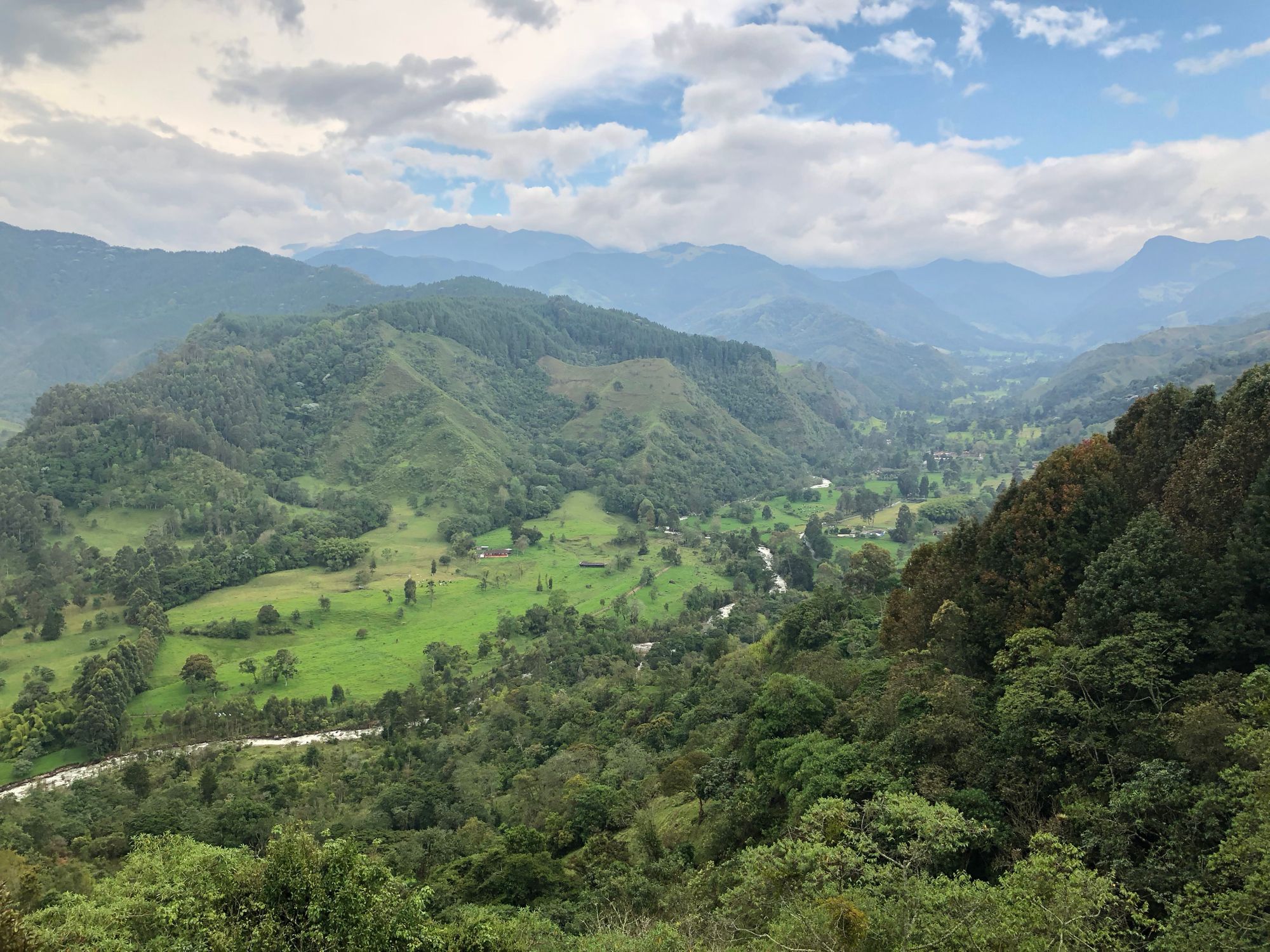
One of the ways in which Carlos and his team have been 'rewilding' Kasaguadua is through measures that encourage the activation of dormant seeds buried underground. These seeds, dropped by the native forest that once stood here, require specific environmental conditions in order to germinate. In some areas a change in the acidity of the soil can trigger a seed; in other places the restoration of the forest canopy provides the shade required for certain species to grow.
On our last day in Salento we got up early to explore the Cocora Valley, one of the damaged ecosystems that Carlos had told us about (not that that's how it's marketed to tourists!). From the main square we took a Willy (a jeep taxi) through hilly countryside to the start of the walking trail that wends its way along the valley.
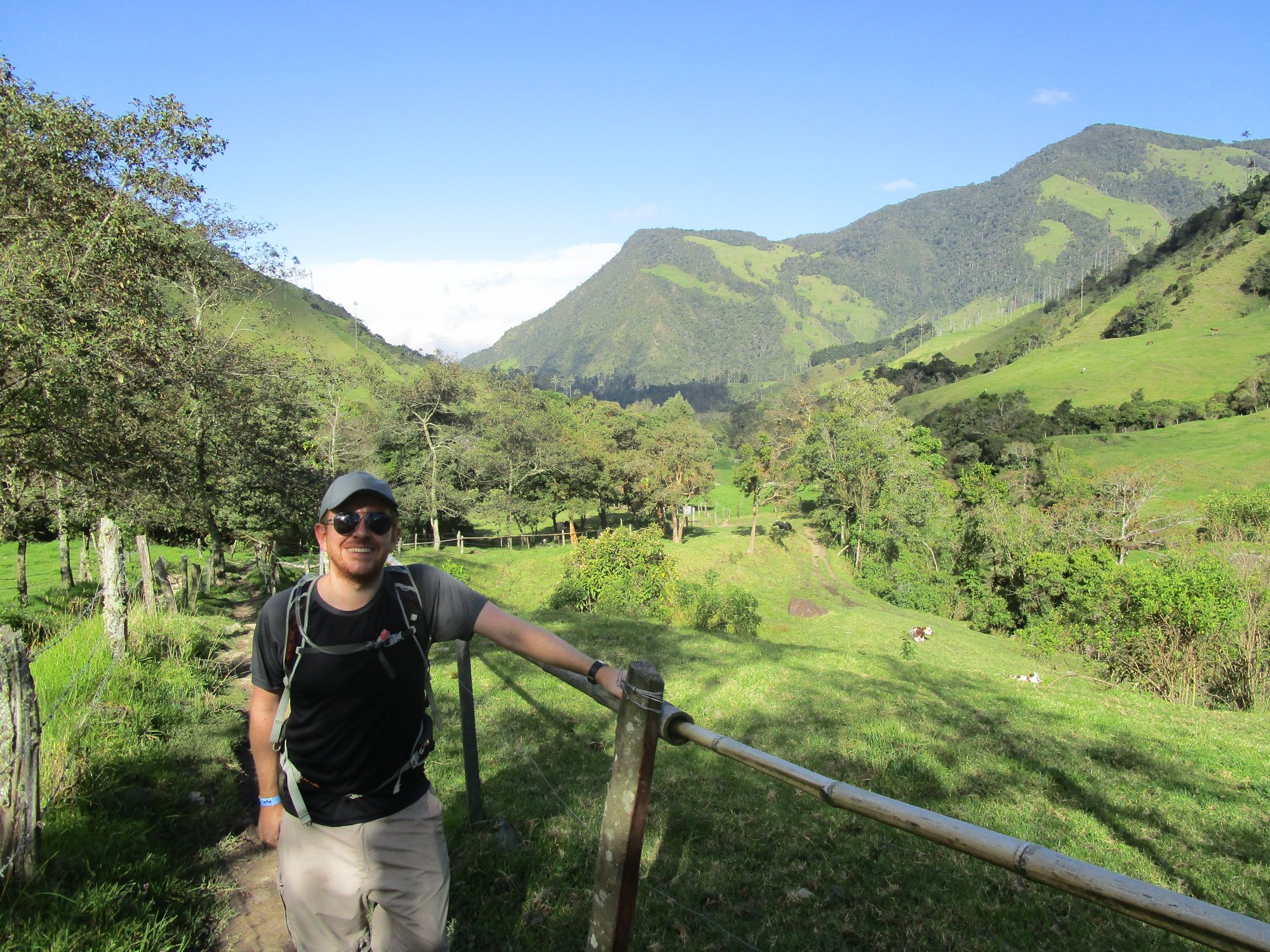
The first part of the trail crossed muddy farmland where cows grazed, with towering wax palms visible up on the hilltops. We were glad that we'd borrowed some rubber boots from our B&B, as we entered a wooded area where the path became rocky and slippery, disappearing under a small stream in places. The hairiest section involved crossing the Quindío river not once but six times, using precarious wooden bridges suspended from wires.
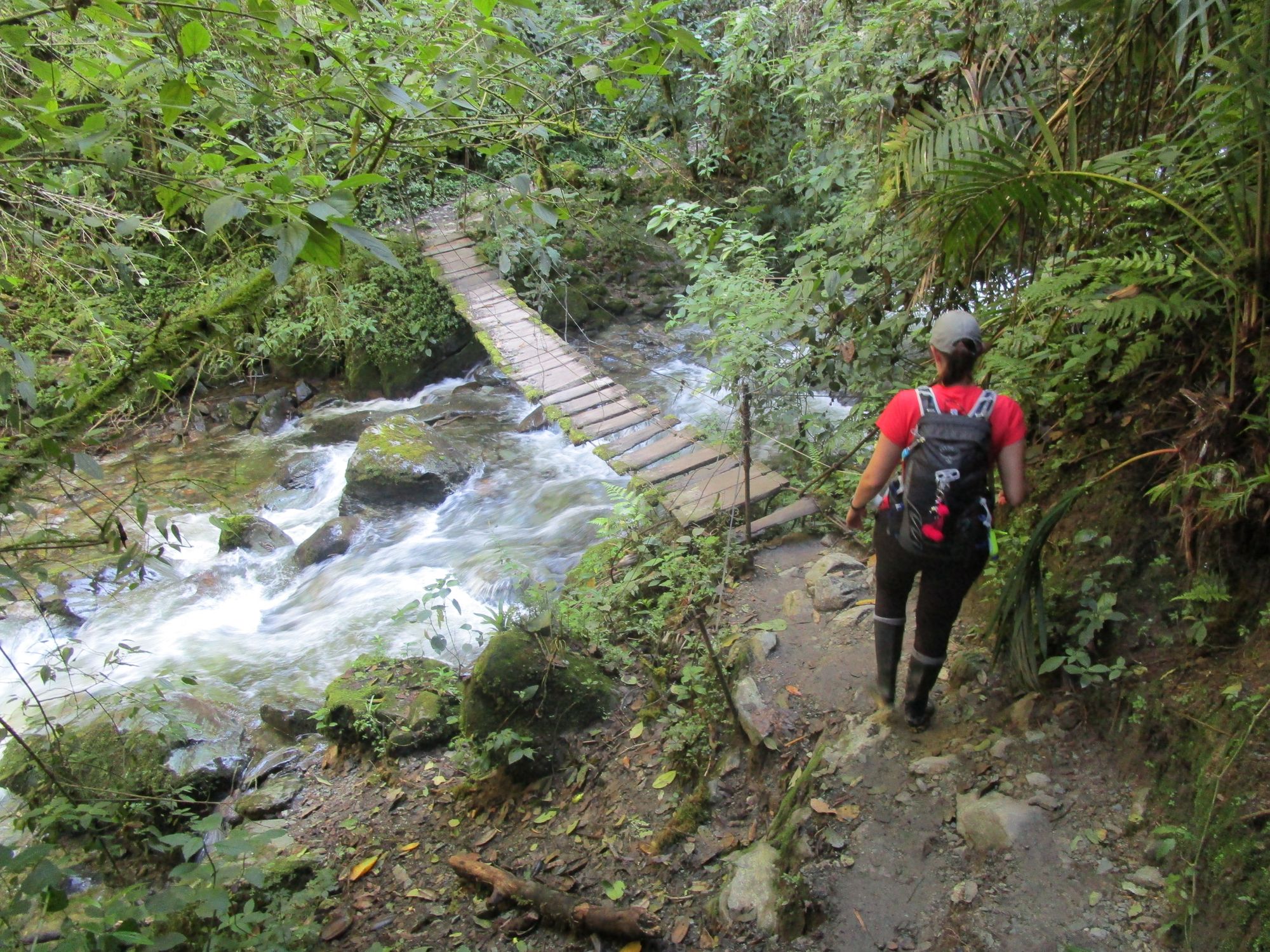
We took a short detour across the worst bridge of the lot, just a couple of slippery logs with a thin wire to grab hold of for balance. On the other side a steep trail led up to a hummingbird sanctuary where the trees were full of these tiny little birds, just some of the 147 different species that exist in Colombia. There was also a small café where we enjoyed a peculiarly Colombian refreshment, a steaming bowl of hot chocolate served with a chunk of rubbery cheese for dipping.

Back on the main trail we tackled the toughest section of the hike, a steep ascent up the valley side, huffing and puffing to an altitude of around 2,400 metres above sea level. From here a gravel road led down towards the famous wax palm forest, where we stopped for a picnic lunch with a fantastic view across the valley. Wax palms are the world's tallest species of palm tree, growing up to an incredible 60 metres tall, and they are only found in Colombia and northern Peru.

The trees are a surreal sight, especially when the clouds roll down the valley and envelop them, but there is also a sadness about this place. In the Cocora Valley they stand alone, surrounded by a bare landscape of closely cropped grass. Because the rest of the forest canopy has been felled, there is no shade to allow young palms to grow. Eventually the elderly trees here will die, and the Cocora Valley wax palms will be no more.

The following day we headed deeper into rural Colombia, with a convoluted journey north via three different buses to the little town of Jardín. A combination of roadworks and landslides meant that it took us a whole day to get there, and when we arrived it was already dark. Just as in Salento, the quiet streets were ablaze with Christmas lights. The little tuktuks buzzing around the town instantly endeared the place to us, especially the one with a light-up Santa's sleigh on the roof.

Jardín was sleepier than Salento, and a lot less touristy. The main square was surrounded by bars and cafés where men in cowboy hats and ponchos sat on brightly painted chairs, sipping aguardiente and playing dominos. A huge neo-Gothic basilica dominated one side of the square, and every day there seemed to be a funeral taking place.
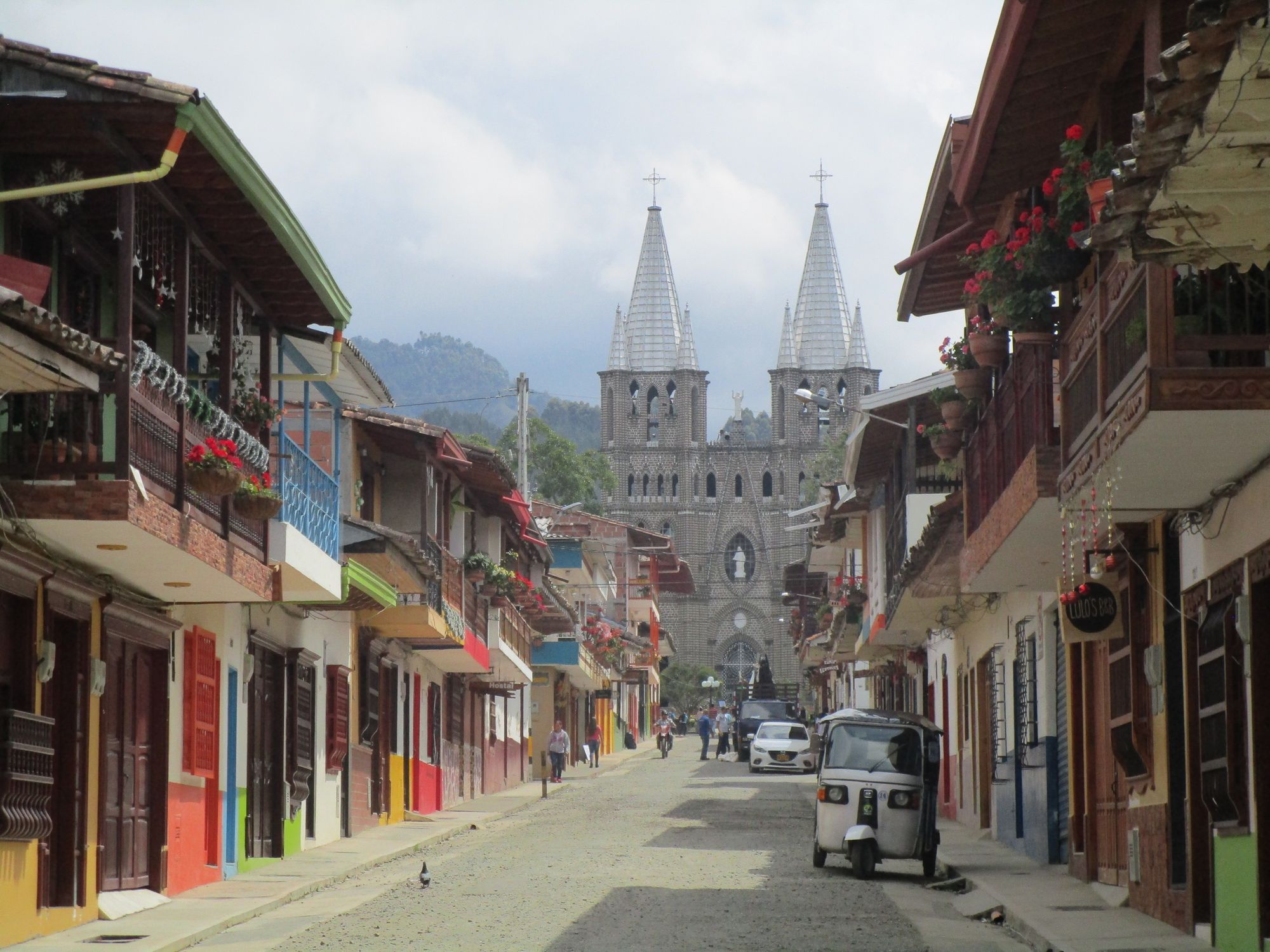
The town was arguably the prettiest place we went on our whole trip around South America. As well as the brightly decorated houses, a recurring feature in small town Colombia, Jardín is also blessed with a spectacular setting amongst verdant mountains. On our second day we rode an old wooden cable car up to a viewpoint overlooking the town. 'Cable car' is a generous description; it was more like a garden shed dangling from a wire. We stopped for a drink at the café next to the viewpoint, then walked down a quiet country lane lined by banana trees and coffee farms, to a little waterfall called the Cascada del Amor.

Later that afternoon we visited the town's most unusual attraction, a house overlooking the San Juan river which receives some very special visitors twice a day. We were met at the front gate by a friendly lady who charged us 10,000 pesos (around £2.50) each to enter her back garden. We could already hear what we'd come here to see, and soon we could see them too: around a dozen peculiar red birds with pronounced, disc-like crests, hopping about and bobbing their heads.

This bird is the Andean cock-of-the-rock, and the garden is what's known as a 'lek', where males gather to compete for the attention of females. Two males will often pair up and confront each other in a sort of showdown, where they jump, flap and squawk in an attempt to face down their rival. We spent nearly an hour watching this fascinating spectacle, just another example of Colombia's incredibly colourful countryside.

